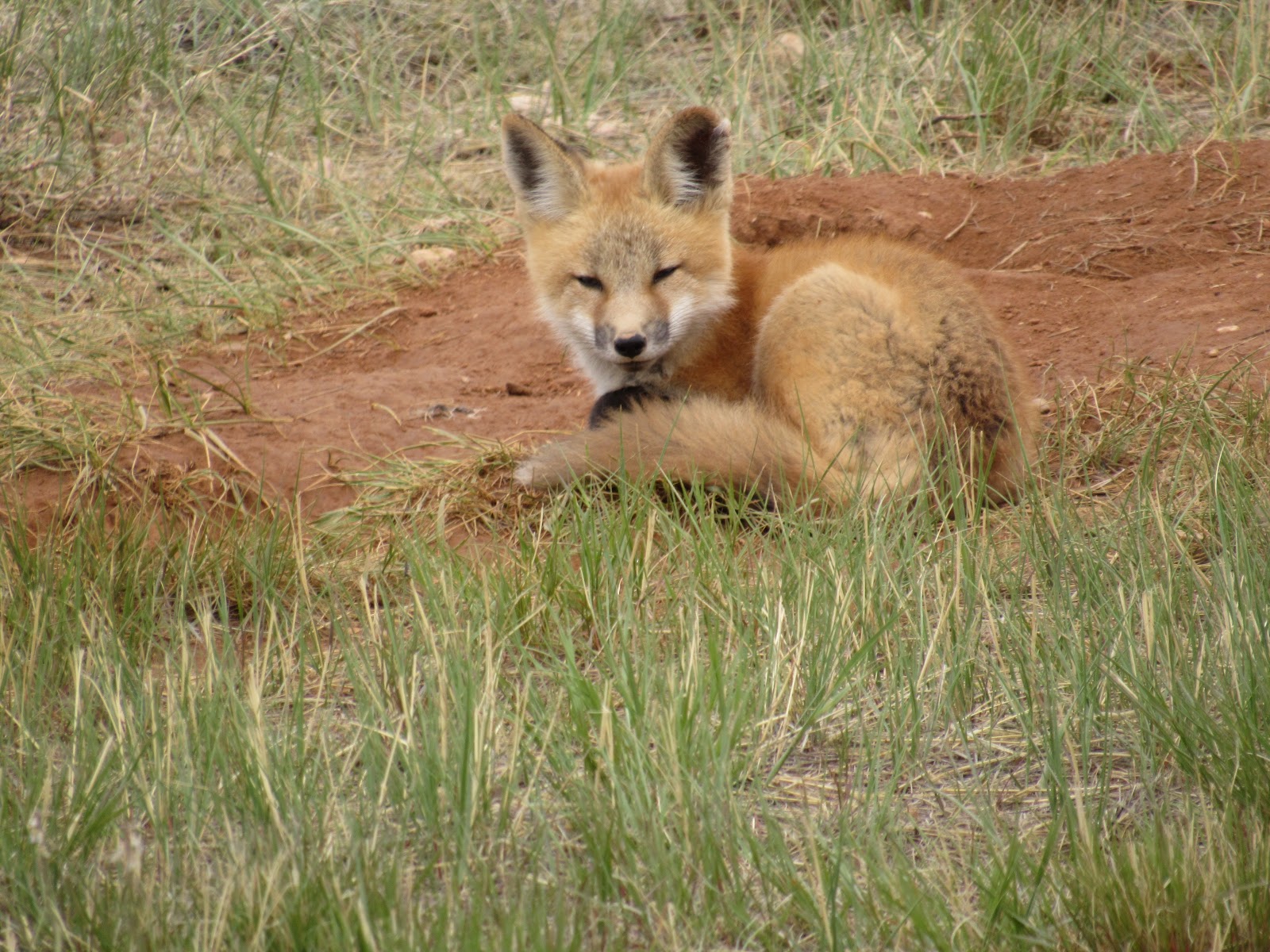Improving Otter Habitats In Wyoming

Table of Contents
Understanding Otter Habitat Requirements in Wyoming
Otters, vital indicators of a healthy ecosystem, have specific needs for thriving in Wyoming's diverse environments. Their survival hinges on several key factors, all interconnected within their habitat.
Water Quality and Availability
Clean, flowing water is paramount for river otters. They rely on rivers and streams in Wyoming, such as the Snake River, Green River, and Yellowstone River, for foraging, breeding, and overall survival. Poor water quality directly impacts their health and reproductive success.
- Clean water sources: Otters need access to unpolluted water, free from harmful chemicals and bacteria.
- Sufficient water flow: Adequate water flow is crucial for maintaining oxygen levels and supporting prey populations.
- Access to multiple water bodies: Otters often utilize several interconnected water bodies within their home range, requiring connectivity between these areas.
- Minimal pollution: Agricultural runoff containing fertilizers and pesticides, industrial waste, and sewage contamination severely affect water quality and endanger otter populations.
Water quality testing and monitoring initiatives, often conducted by the Wyoming Department of Environmental Quality and partnering organizations, are crucial for assessing the health of otter habitats and guiding conservation efforts.
Prey Availability
A healthy prey base is essential for otter survival. Their diet consists primarily of fish, but they also consume amphibians, crayfish, and other aquatic invertebrates.
- Abundant fish populations: Healthy fish populations, including native species like trout and suckers, are crucial.
- Suitable amphibian and invertebrate populations: A diverse range of amphibians and invertebrates provides a supplementary food source and contributes to ecosystem health.
- Impact of invasive species: Invasive species can outcompete native prey, reducing food availability for otters and disrupting the ecosystem's delicate balance.
Monitoring prey populations and managing invasive species are key components of effective otter habitat management in Wyoming.
Riparian Vegetation
Healthy riparian zones – the vegetation along waterways – play a crucial role in supporting otter populations.
- Bank stability: Intact riparian vegetation prevents erosion, maintaining stable riverbanks essential for denning.
- Denning sites (bank burrows): Otters rely on burrows for shelter, protection from predators, and raising young.
- Cover from predators: Riparian vegetation provides crucial cover from predators like coyotes and eagles.
- Nesting materials: Plants provide nesting materials for otter dens.
Specific plant species crucial for Wyoming's riparian habitats, such as willows and cottonwoods, are often threatened by erosion and drought, highlighting the need for riparian restoration efforts.
Threats to Otter Habitats in Wyoming and Mitigation Strategies
Several significant threats jeopardize otter habitats and populations in Wyoming, necessitating proactive mitigation strategies.
Habitat Loss and Fragmentation
Human development significantly impacts otter habitats.
- Dam construction: Dams fragment river systems, disrupting otter movements and access to critical habitats.
- Road construction: Roads fragment habitats and increase mortality risk through vehicle collisions.
- Agricultural expansion: Agricultural practices can lead to habitat loss, water pollution, and reduced prey availability.
- Urban sprawl: Expanding urban areas encroach upon otter habitats, reducing available space and increasing human-wildlife conflict.
- Impact on connectivity between otter populations: Habitat fragmentation isolates otter populations, reducing genetic diversity and making them more vulnerable.
Identifying and protecting key habitat areas, implementing wildlife crossing structures, and promoting responsible land-use planning are critical mitigation strategies.
Pollution and Water Quality Degradation
Pollution from various sources poses a severe threat to otters and their prey.
- Agricultural runoff: Fertilizers and pesticides contaminate water, harming otter health and reducing prey abundance.
- Industrial discharge: Industrial pollutants can cause significant water contamination and harm otter populations.
- Sewage: Untreated sewage introduces pathogens and contaminants into water bodies, threatening otter health.
- Mine tailings: Mine tailings can release heavy metals and other toxins into waterways, severely impacting water quality.
- Effects on otter health and reproduction: Pollution can lead to reproductive problems, reduced lifespan, and increased susceptibility to diseases in otters.
Enforcing existing environmental regulations, promoting sustainable agricultural practices, and investing in wastewater treatment infrastructure are crucial steps to mitigate pollution.
Climate Change Impacts
Climate change significantly impacts otter habitats.
- Altered water flow: Changes in precipitation patterns affect water flow, impacting prey availability and habitat connectivity.
- Drought: Droughts reduce water availability and negatively affect prey populations.
- Increased wildfire risk: Increased wildfire frequency can destroy riparian habitats and reduce prey availability.
- Impact on prey populations: Climate change alters the distribution and abundance of prey species, affecting otter food sources.
Adaptation strategies such as restoring riparian vegetation, improving water management practices, and promoting climate-resilient land-use planning are essential.
Conservation Efforts and Community Involvement in Protecting Otter Habitats
Effective otter habitat conservation requires a collaborative effort involving government initiatives, community involvement, and responsible land management practices.
Government Initiatives and Regulations
Several initiatives in Wyoming aim to protect otter habitats.
- Endangered Species Act: The Endangered Species Act provides legal protection to threatened or endangered otter populations.
- State-level wildlife management plans: Wyoming Game and Fish Department develops and implements management plans to conserve otter populations and their habitats.
- Habitat restoration projects: Government agencies and organizations undertake habitat restoration projects to improve water quality and riparian vegetation.
The Wyoming Game and Fish Department plays a key role in overseeing these initiatives.
Community-Based Conservation Projects
Citizen science initiatives and volunteer efforts are essential for effective conservation.
- Otter monitoring programs: Volunteer programs monitor otter populations and assess habitat conditions.
- Riparian restoration projects: Volunteers participate in planting native vegetation along waterways.
- Educational outreach: Community groups and organizations educate the public about otters and their conservation needs.
Organizations involved in otter conservation in Wyoming can provide valuable volunteer opportunities.
Land Management Practices
Sustainable land-use practices are crucial for long-term otter habitat protection.
- Responsible grazing practices: Sustainable grazing management prevents overgrazing and protects riparian areas.
- Buffer zones around waterways: Establishing buffer zones between waterways and agricultural or developed lands helps protect water quality and riparian habitats.
- Sustainable forestry: Sustainable forestry practices minimize habitat disruption and maintain water quality.
Promoting these practices ensures the long-term health of otter habitats.
Conclusion
Improving otter habitats in Wyoming requires a multifaceted approach encompassing habitat restoration, pollution reduction, and community engagement. By understanding the specific threats facing otters and implementing proactive conservation measures, we can ensure the long-term survival of this vital species. We all have a role to play in protecting these amazing animals and their unique ecosystems. Get involved in local conservation efforts and learn more about how you can contribute to improving Otter Habitats Wyoming. Your actions can make a difference!

Featured Posts
-
 January 6th Fallout Ray Epps Defamation Suit Against Fox News Explored
May 22, 2025
January 6th Fallout Ray Epps Defamation Suit Against Fox News Explored
May 22, 2025 -
 Wisconsin Gas Prices Jump 3 Cents Reaching 2 98 Gallon
May 22, 2025
Wisconsin Gas Prices Jump 3 Cents Reaching 2 98 Gallon
May 22, 2025 -
 The Amazing World Of Gumball New Hulu Premiere Teaser
May 22, 2025
The Amazing World Of Gumball New Hulu Premiere Teaser
May 22, 2025 -
 Rezultat Fara Echivoc In Liga Natiunilor Georgia Invinge Armenia 6 1
May 22, 2025
Rezultat Fara Echivoc In Liga Natiunilor Georgia Invinge Armenia 6 1
May 22, 2025 -
 Poznat Izgledot Na Sheshirite Makedoni A Gi Dozna Mozhnite Protivnitsi Vo Ligata Na Natsii Foto
May 22, 2025
Poznat Izgledot Na Sheshirite Makedoni A Gi Dozna Mozhnite Protivnitsi Vo Ligata Na Natsii Foto
May 22, 2025
